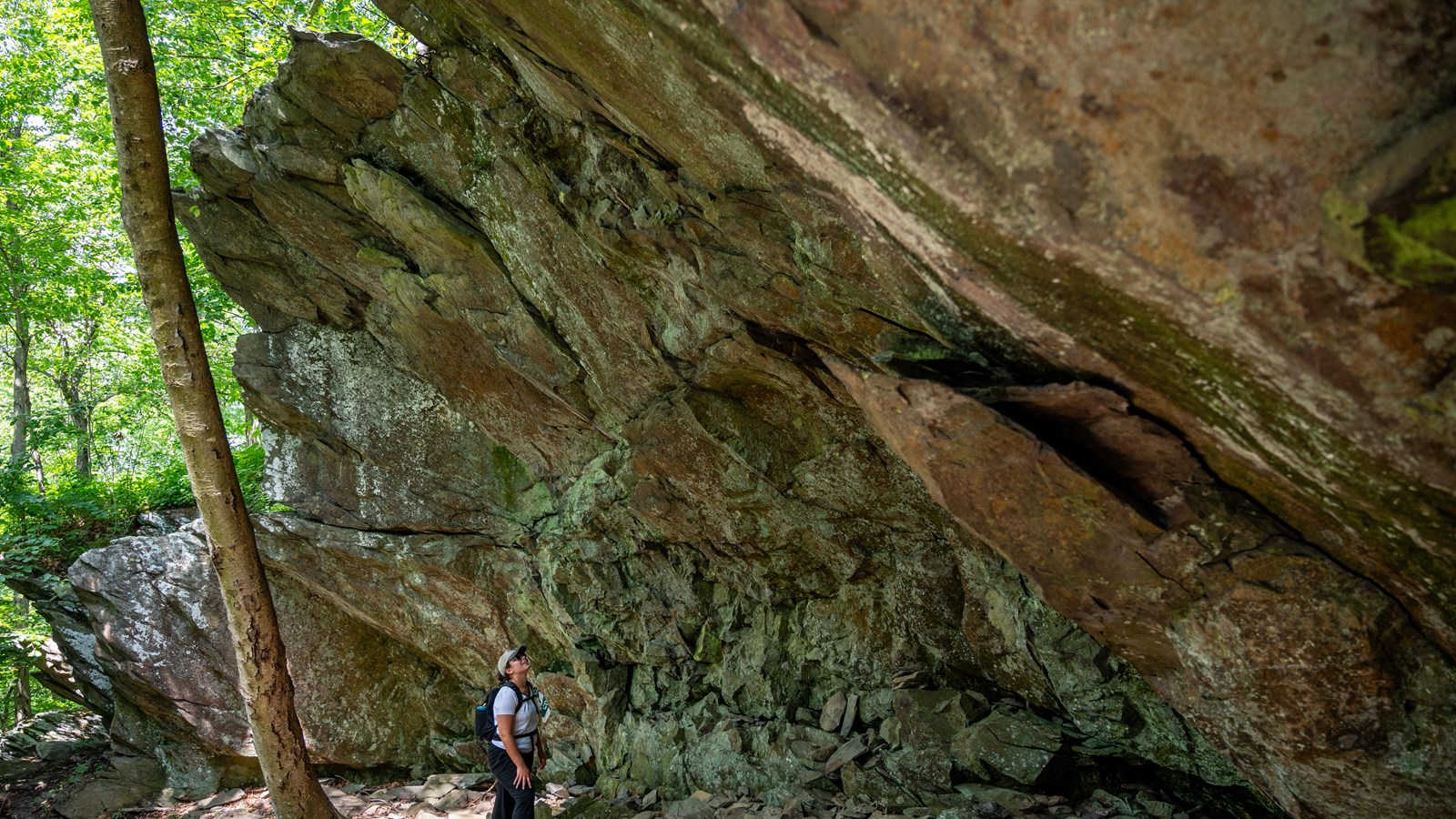Last updated: August 1, 2024
Place
Frazier Trail Geologic Discovery

While the geology of Shenandoah lies underfoot and forest, there are still many spectacular reminders of what makes the mountains. Along the Frazier Discovery Trail, this geology is laid out as Greenstone, a metabasalt (former volcanic stone that underwent change). Known for its often green hue, the Greenstone that makes the overhanging cliffs and rocky outcroppings of Frazier offer more opportunity to find other hidden "gems."
A close look at the most prominent cliff along the trail may provide the viewer a deeper glimpse into the stone's history. Bubble rocks (or amygdaloidal greenstone) are pockmarked by round blotches that started as pockets of gas which cooled within the lava. A close look at these bubbles (amygdules) may reveal a crystalline appearance as quartz (white), feldspar (orange and pink), and epidote (green) filled in later.
Similarly, cracks that formed during the cooling period of the volcanic stone now appear as veins of minerals, offering striking contrast to the grey-green of the Greenstone itself. The jagged appearance of the cliff's top is from the squeezing and folding that occurred while the mountain was uplifted and born. These ragged fractures are known as rock cleavage. Over tens of housands of years, the softer mineral eroded away, leaving a walking space beneath the cliff and a beautiful view of these many geologic processes.
A close look at the most prominent cliff along the trail may provide the viewer a deeper glimpse into the stone's history. Bubble rocks (or amygdaloidal greenstone) are pockmarked by round blotches that started as pockets of gas which cooled within the lava. A close look at these bubbles (amygdules) may reveal a crystalline appearance as quartz (white), feldspar (orange and pink), and epidote (green) filled in later.
Similarly, cracks that formed during the cooling period of the volcanic stone now appear as veins of minerals, offering striking contrast to the grey-green of the Greenstone itself. The jagged appearance of the cliff's top is from the squeezing and folding that occurred while the mountain was uplifted and born. These ragged fractures are known as rock cleavage. Over tens of housands of years, the softer mineral eroded away, leaving a walking space beneath the cliff and a beautiful view of these many geologic processes.
